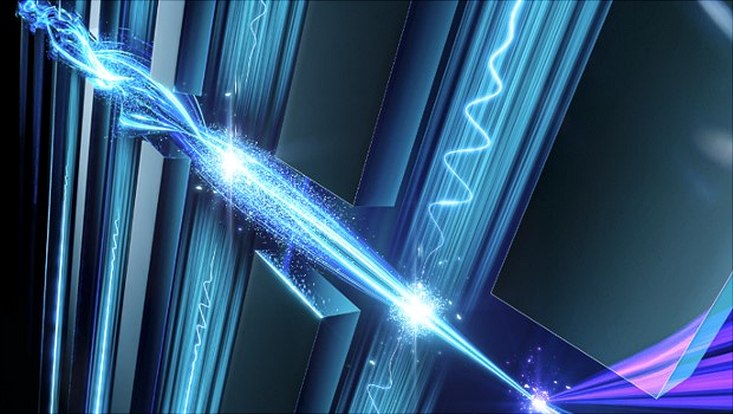Imaging of Matter
Introducing: the first practical Terahertz-powered ultrafast photogun
30 May 2024

Photo: DESY
A team of researchers from the Shanghai Jiao Tong University, DESY and Universität Hamburg have developed the first practical Terahertz (THz)-driven photogun. Electron guns enabling ultrashort and -bright electron bunches have recently led to the implementation of ultrafast electron diffraction instruments as a complementary technology to X-ray free-electron lasers for determining the structure and function of atomic, molecular and nano-systems on their intrinsic timescales.
Driving at THz frequencies promises to achieve efficient extraction fields for ultra-low emittance and thus in turn ultra-high brightness guns. In addition, the THz radiation is derived from the same optical laser pulse as the optical trigger pulse used to initiate the process under study, and, therefore, is intrinsically synchronized on the femto- and potentially attosecond time scale with the generated electron bunch. This paper tackles the challenge of achieving sufficient brightness, energy, and control in THz-driven electron sources for demanding ultrafast applications.
Promising technology for next-generation electron sources
THz-based electron acceleration is a promising technology for next-generation cost-efficient compact electron sources. Although scientists have already proven that many THz-driven accelerator components work, THz-driven photoguns with sufficient brightness, energy and control for use in demanding ultrafast applications have yet to be achieved. In their paper, the team presents a novel millimeter-scale multi-cell waveguide-based THz-driven photogun that exploits field enhancement to boost the electron energy, a movable cathode to achieve precise control over the accelerating phase as well as an additional cell for pulse compression.
The short THz driving pulses enabled a peak acceleration gradient of up to some three GV/m, leading to electron beams with energies reaching around 14 keV, a minimal energy spread and exceptional beam quality with only about 0.02 mm mrad transverse emittance. By integrating a rebunching cell, the scientists managed to compress the electron bunch by about 10 times to a duration of 167 femtoseconds, enhancing its utility for ultrafast applications.
Highest energy, acceleration gradient, and beam quality
The study also demonstrated the practical applicability of the technology by producing high-quality diffraction patterns of single-crystal silicon and projection microscopy images of a copper mesh, opening up new possibilities in electron projection microscopy and diffraction. Additionally, the researchers were able to map transient radial electric fields on the copper mesh with high spatiotemporal resolution, offering a potential avenue for plasma-based beam manipulation.
The research, which was supported by the Cluster of Excellence "CUI: Advanced Imagign of Matter" was published in Nature Photonics. It represents the highest energy, acceleration gradient, and beam quality reported thus far from an all-optical THz-powered device, promising exciting prospects for future implementations in tabletop radiation sources and other research areas. Text: DESY, ed.
Citation
J. Ying, X. He, D Su, L. Zheng, T. Kroh, T. Rowher, M. Fakhari, G. Kassier, J. Ma, P. Yuan, N. H. Matlis, F. X. Kärtner and D. Zhang
"High gradient Terahertz-driven ultrafast photogun"
Nature Photonics (2024)


